Guitar Gavel Lick Of The Week with Keith Amyx
Keith has a little Texas twang for you this week, hybrid picking in G. tab is at the end of the video. Thanks Keith, and nice shirt brother! :-)
The 1960s were a weird time at Fender, mainly due to the acquisition by CBS. However, Fender was still a relatively young company and fiercely competing with other manufacturers for market share. While Fender had their legacy guitar models anchored by the Telecaster and Stratocaster, it was way too early in the game to slow down innovation.
Some of the guitars Fender rolled-out during the 1960s included: the Jazz bass in 1960, Mustang, Jaguar, acoustic flat tops, thinline Coronado series, banjos, a couple of jazz boxes, and the thinline Tele in 1968. Despite Fender’s attempts to expand their 6-string offerings many of the guitars introduced were not especially successful. Fender amps on the other hand experienced a renaissance.
The feature of this article is Fender’s thinline Coronado. Introduced in 1966 it was an attempt to compete with Gibson, Epiphone, and Gretsch as Fender did not have a hollow or semi-hollow body offering.
Enter Roger Rossmeisl in 1962, the famed designer from Rickenbacker who helped deliver Ricky’s Capri 300 Series, 4000 “cresting wave” bass, and redesigned the Combo 600 and 800. Rossmeisl is also credited for popularizing the German carve on American guitars. Semie Moseley, founder of Mosrite Guitars, was an apprentice of Rossmeisl’s while at Rickenbacker and the German carve is a legacy feature of his style.
Leo Fender hired Rossmeisl in 1962 to create a line of acoustic flat-top guitars which were released in 1964. Rossmeisl remained at Fender until 1970, working his way up to the head of R&D. He went on to design the Coronado in 1966, Fender’s first jazz guitars the LTD and Montego (yes, Fender jazz boxes) and brought about the Thinline Tele in 1968.
The Coronado was an odd-duck, a full hollow body with a bolt-on neck instead of a set neck, and sporting DeArmond pickups. There were issues right out of the gate as feedback was a sincere problem for rock players and jazz elites despised the bolt-on neck. The DeArmond pickups didn’t help either and fell flat compared to a P-90 or Gretsch humbuckers. There were five options in the line-up, a single pickup Coronado I, dual pickup Coronado II, a twelve-string, and two basses.
The fancier offering of the bunch was the Coronado II featuring a fully bound top and back, bound f-holes and fretboard, and block inlays. By far the most fascinating concept of the Coronado was the “Wildwood” versions of the guitar. I could not find the source of the name “Wildwood” or really anything beyond it was the creation of a Danish chemist, but it refers to a method of injecting dyes into the root system of young beechwood trees. As the trees grow the dye spreads through the grain of the wood and leaves behind a pigment of the color that was injected. History insinuates Rossmeisl introduced the technology and concept to Fender, but nor could I find how Fender sourced the wood. Fender also used the Wildwood on their top of the line Kingman acoustic and Elvis played one in the 1967 film “Clambake”.
Have you ever seen a Fender Antigua finished guitar? Deep in the underworld of Fender forums there are literal arguments as to how ugly of a finish it is, and only the most diehard Fender fans come to any sort of defense. This finish was an accident and happened during the binding process on a batch of Coronado II’s as the tops ended up being burned. Of course Fender’s new owners, CBS, weren’t terribly concerned with quality control and very much concerned with costs so they saw this as an opportunity to introduce the “Antigua” finish. Somehow the Antigua finish permeated on many Fender models through the 1970s… oh, l forget mustard yellow was a thing in the 1970s.
In addition to more standard paint finishes there were six Wildwood color options and the number on the pickguard referred to the color. In this guitar below the “Wildwood III” refers to orange. The non Wildwood Coronado’s had a maple top, back, and sides. Over the course of the Coronado’s short life span there was a variety of tailpiece, bridge and vibrato options.
The binding also varied from a standard solid binding to a very handsome checkered binding, a Rossmeisl aesthetic that he first used at Rickenbacker. The original MSRP in 1966 for a Coronado II was $319.50 compared to a sunburst Strat of $281.00. The last appearance in a Fender catalog was 1970 and like almost anything Fender from the 1960s these guitars have experienced a resurrection on the vintage market.


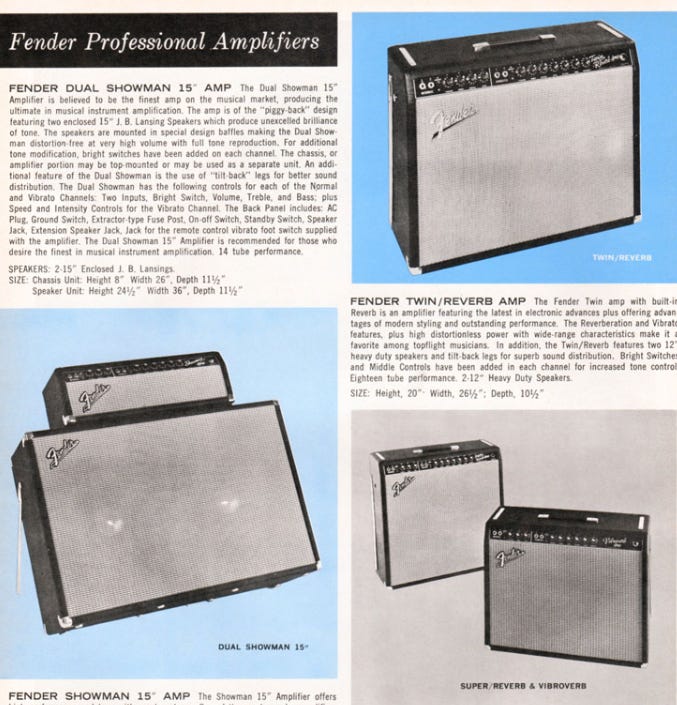
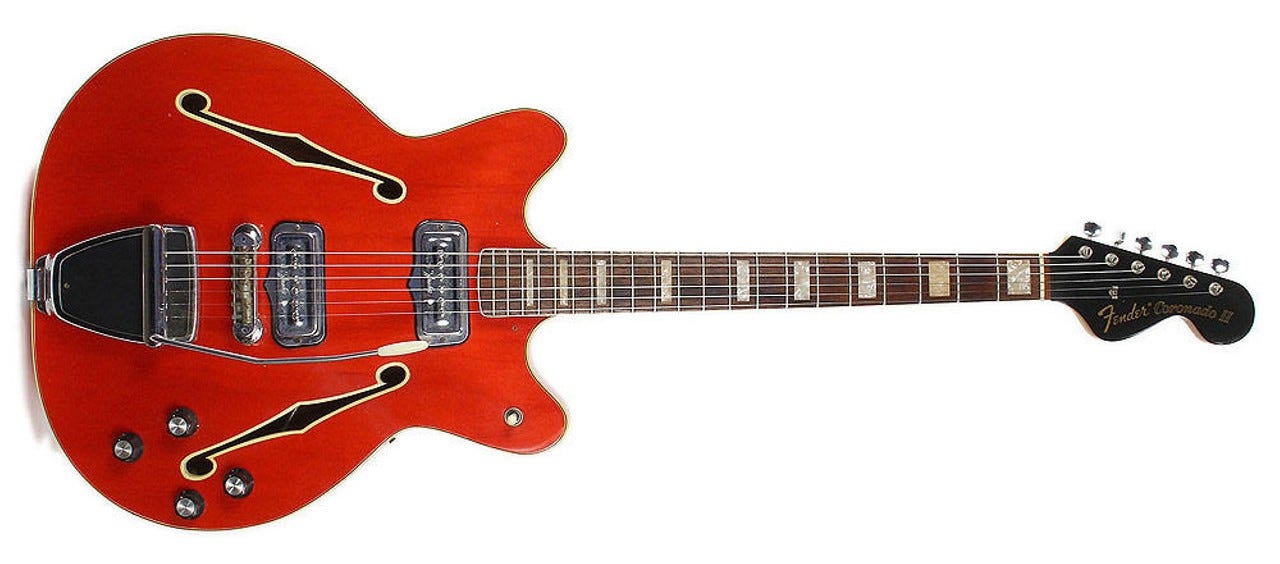
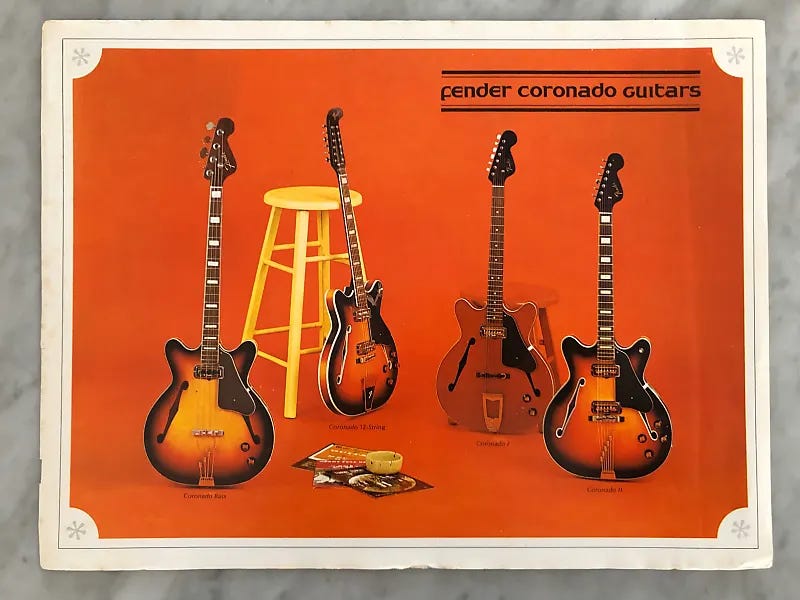
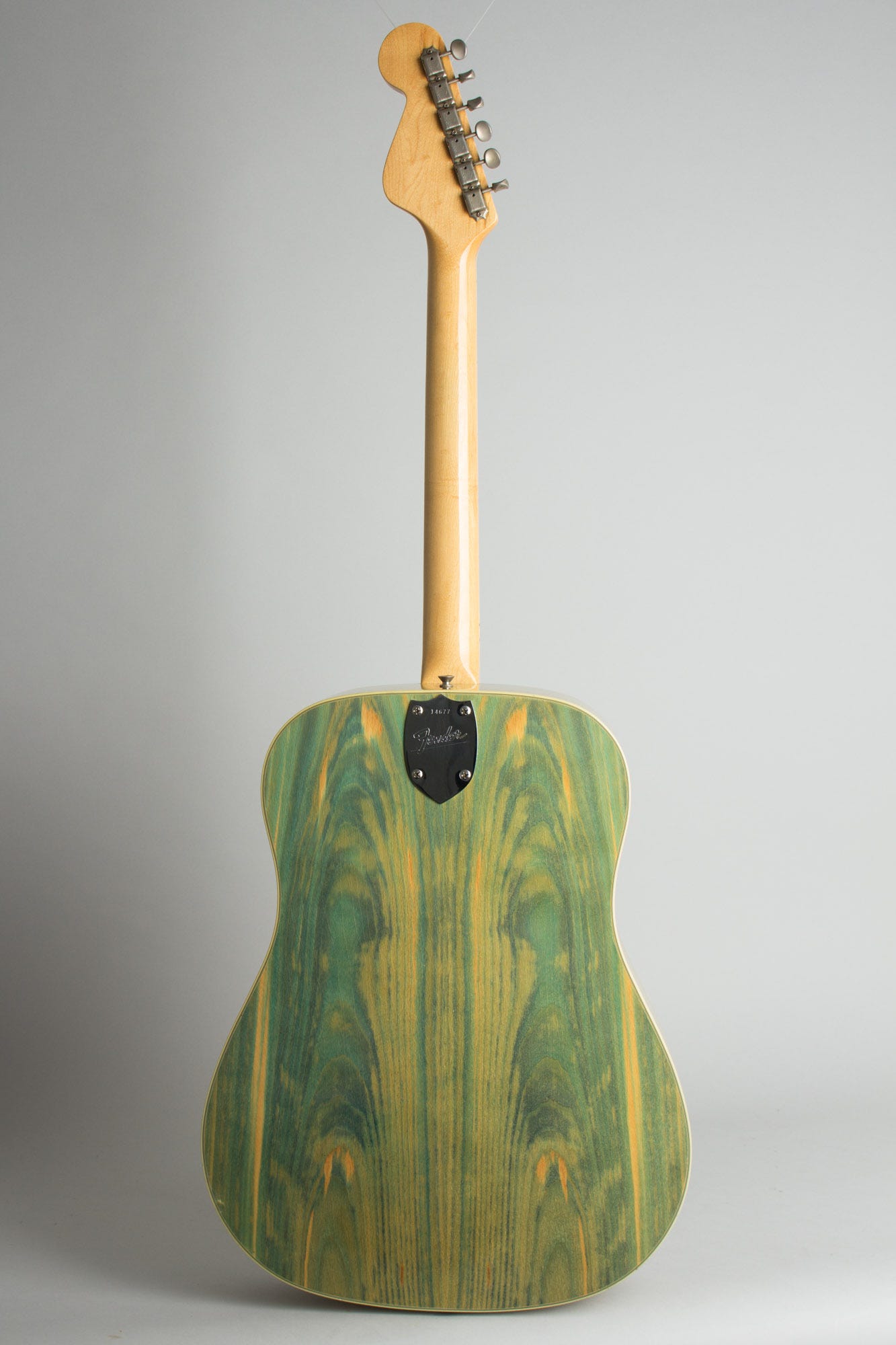
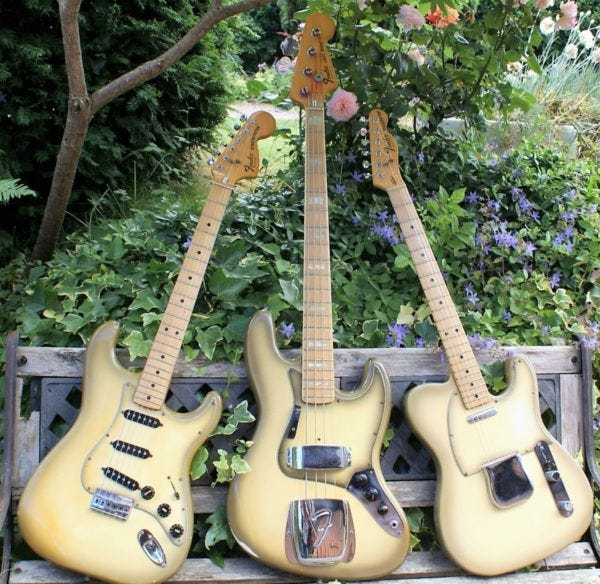
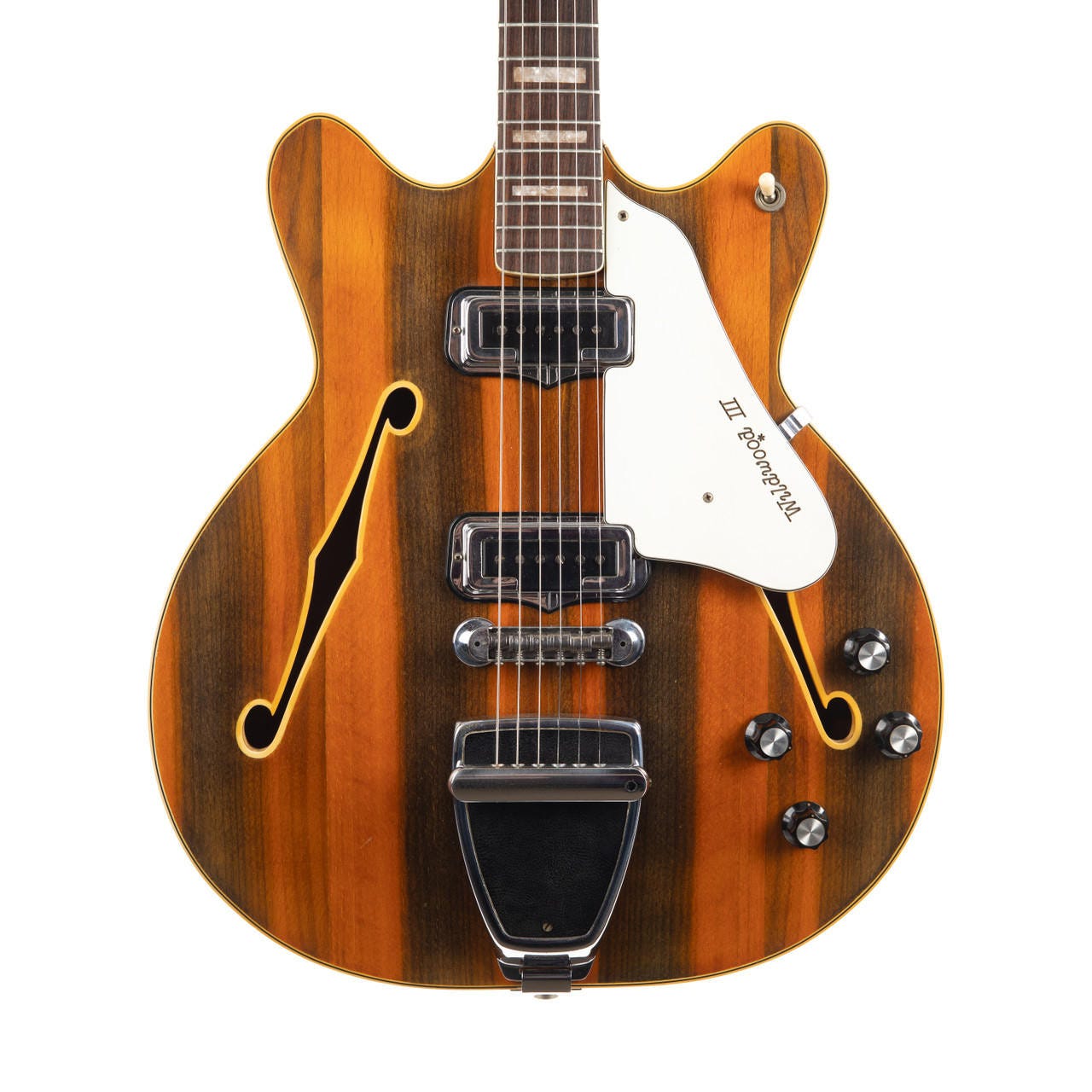
1 comment
Wow! Talk about odd and/or weird ducks! Thank you for the history. Loving the Gavels.